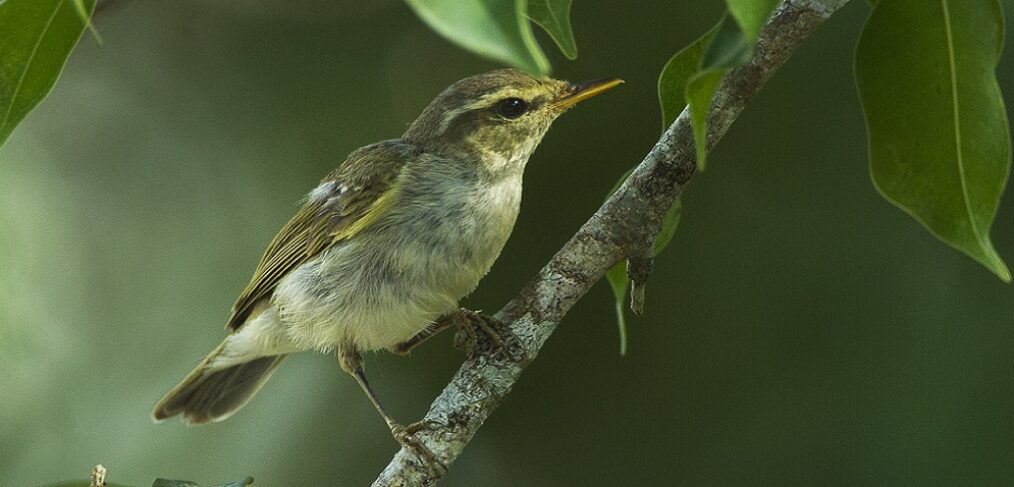
Species of the week #107 – greenish warbler
In June, with a lot of luck, you can observe a very special summer visitor in Germany. The greenish warbler spends most of its time in its wintering grounds in India. However, it breeds in the cool taiga, from the Baltic Sea to Eastern Siberia, and on the way there, some greenish warblers fly a wide arc, passing through Germany. Apparently, some greenish warblers like it here so much that they break off their journey and breed here. The first greenish warbler to do so was in the Westerwald about 60 years ago; there are also confirmed breeding records from the island of Helgoland. Nevertheless, the greenish warbler is quite rare in our country. The best chances of sighting it are in the Harz Mountains or in woods and gardens rich in trees on the Baltic and North Seas.
| Distribution status in Germany | extremely rare |
| Remaining occurance | Harz, Helgoland, |
| Last sightening in Germany | current |
| Habitat | Mixed and deciduous forests with old trees |
| Threat | Undangered |
The Greenish Warbler grows to about 10 to 11 cm. The plumage on the back is grey-greenish, the underside is light grey. The distinctive light over-eye streak and the dark “bridle streak” are striking. For the period 2005-2009, a total population of 2-10 territories is assumed for Germany, with a slight upward trend. Since 2015, it has even been found in Switzerland; it has also been recorded in Great Britain. It is unclear why the Green Warbler is increasingly expanding its migration routes to the west.
Like all warblers, the greenish warbler is very agile and often works its way through dense branches in search of food. It inhabits mixed and deciduous forests with old trees and likes towering singing places. Its grey-green colouring makes it perfectly camouflaged. The greenish warbler builds its nest in a spherical shape, with an opening at the side, in a niche, a small cave or a break in the rock, rarely also directly on the ground in the root area of a tree. The nest is always well hidden and is even covered with moss and small stalks. The greenish warbler’s diet consists of small insects, spiders and snails.
Although the warbler puts a lot of effort into camouflage and hiding, one thing gives it away quite regularly – its varied song. Different, sometimes complicated elements are performed sharply and quickly one after the other, and the pitch also changes again and again. Sometimes he imitates the song of other bird species, such as wrens and wagtails. The latter feel provoked and try to chase him away from their territory. To appease the angry neighbour, the greenish warbler simply starts another tune and everyone is happy.
Photo : By Francesco Veronesi from Italy – Greenish Warbler -Thailand_S4E7973, CC BY-SA 2.0, https://commons.wikimedia.org/w/index.php?curid=58466058
Click here for more exciting animal and plant species
